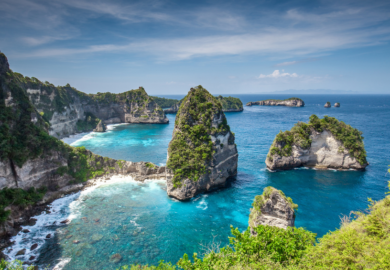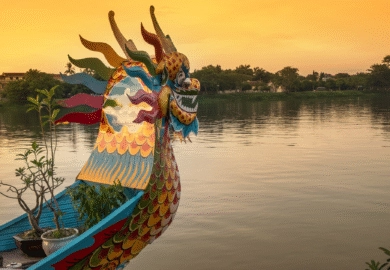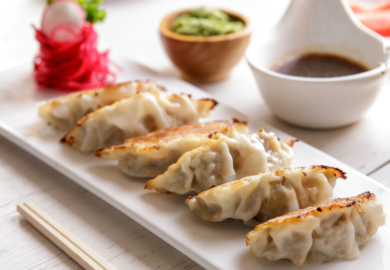Table of Contents
In the heart of exotic adventures and cultural tapestries, travel in Southeast Asia is a realm where every street corner holds a story and every landscape a legend. If your wanderlust craves vibrant experiences against mesmerizing backdrops, then Southeast Asia beckons with an irresistible call.
Here in this expansive guide, we will unfurl the treasures of this region for the intrepid voyager, the budget walker, and the culture enthusiast.
Introduction to Southeast Asia Travel
What is the Lure of Southeast Asia?
From the bustling streets of Bangkok to the tranquil temples of Luang Prabang, Southeast Asia melds sensory delights with a deep, rich history. Each country houses its enchanting allure. Whether you seek solace in the shadow of Angkor Wat, beauty in the beaches of Bali, or adventure in the jungles of Borneo, this dynamic region offers a travel tapestry unparalleled.
The Mosaic Awaiting Your Arrival
The landscapes shift dramatically across the region, from the jagged karst peaks of Halong Bay to the emerald isles of the Philippine archipelago. Diverse cultures intermingle, evident in the Golden Triangle of Thailand, Laos, and Myanmar, or the colonial history etched in the streets of Vietnamese Saigon. In the markets and mountaintops, you meet with the syncopated rhythm of life that is Southeast Asia’s pulse.
Essential Destinations in Southeast Asia
Journey through Southeast Asia is punctuated with iconic locations that resonate with global travelers. Some destinations are revered for their historical significance while others are legendary for their restorative natural beauty and charm. These travel cornerstones invite you to immerse in the essence of the region.
Iconic Cities of Southeast Asia
The iconic cities of Southeast Asia are booming metropolises infused with a generous dose of tradition. Bangkok dazzles with its modern cityscape, while Hanoi and Yangon preserve their colonial charm. Singapore is a global hub of commerce and culture, whereas Manila thrives on the Filipino spirit. Each city has a unique story that unfolds as you walk through it.
Bangkok, Thailand
Roam among the ancient temples that sit in the shadow of glittering skyscrapers. A food lover’s paradise, the bustling night markets, and street stalls offer a feast for the senses. Visit the Grand Palace to witness its grandeur and discover Bangkok’s rich history in Chinatown.
Hanoi, Vietnam
Vietnam’s capital is a charming mix of French colonial architecture, traditional pagodas, and vibrant street life. Pay your respects at the Ho Chi Minh Mausoleum or wander through the atmospheric Old Quarter. Unwind with a cup of Ca Phe Sua Da (Vietnamese iced coffee) at a sidewalk cafe and watch the world go by.
Yangon, Myanmar
Myanmar’s largest city is a melting pot of cultures and traditions. Admire the golden Shwedagon Pagoda, one of the most sacred Buddhist sites in the world. Indulge in Burmese cuisine at bustling night markets or take a boat ride on Inya Lake for a relaxing escape from the city’s hustle and bustle.
Singapore, Malaysia
Singapore is a modern metropolis known for its diverse cultural influences. Visit Chinatown for a taste of local Chinese cuisine and culture, marvel at the futuristic Gardens by the Bay, or take a trip to Sentosa Island for some fun in the sun.
Manila, Philippines
The vibrant capital of the Philippines offers a mix of colonial history and contemporary culture. Visit Intramuros, also known as the “Walled City,” to explore Spanish-era architecture and immerse yourself in Filipino folklore at museums and galleries.
Pristine Beaches and Coastal Retreats
The coastal gems of Southeast Asia are a sanctuary for sun-seekers and water babies alike. From quiet, secluded beaches to buzzing resort towns, this region has it all. Here are some of the top picks for your beach getaway.
Phuket, Thailand
Phuket is Thailand‘s largest island and a tropical paradise with endless white sandy beaches, crystal clear waters, and lush forests. Indulge in water sports, take a boat tour of the surrounding islands, or simply relax on the beach with a refreshing coconut.
Bali, Indonesia
Bali is one of the most famous destinations in Southeast Asia, known for its stunning beaches and rich cultural heritage. The island’s volcanic landscape offers not only picturesque beaches but also opportunities to hike through lush forests and visit ancient temples.
Boracay, Philippines
The powdery white sands and crystal clear waters of Boracay have made it one of the top beach destinations in Asia. With its lively nightlife, water sports activities, and laid-back island vibe, there is something for everyone on this idyllic Philippine island.
Phu Quoc, Vietnam
Phu Quoc Island boasts stunning beaches surrounded by tropical rainforests and coral reefs, making it the perfect place for a beach vacation. From visiting pearl farms to exploring the lush Phu Quoc National Park, there is much to discover on this beautiful island.
Langkawi, Malaysia
Malaysia’s archipelago comprises 99 islands, and Langkawi is among the most celebrated for its pristine beaches and duty-free shopping. Spend the day lounging on the beach, take a cable car ride for stunning views of the island, and don’t forget to try some delicious Malaysian cuisine.### Alluring Southeast Asia
Southeast Asia is a veritable treasure trove filled with vibrant cultures, breathtaking landscapes, and warm hospitality. Whether you’re seeking adventure or relaxation, there’s something for everyone in this region. So pack your bags, and get ready to experience the sights, sounds, and flavors of Southeast Asia.
The vibrant cities and idyllic beaches of Southeast Asia await your arrival with their rich history, diverse cultures, and unforgettable experiences. From bustling metropolises to secluded
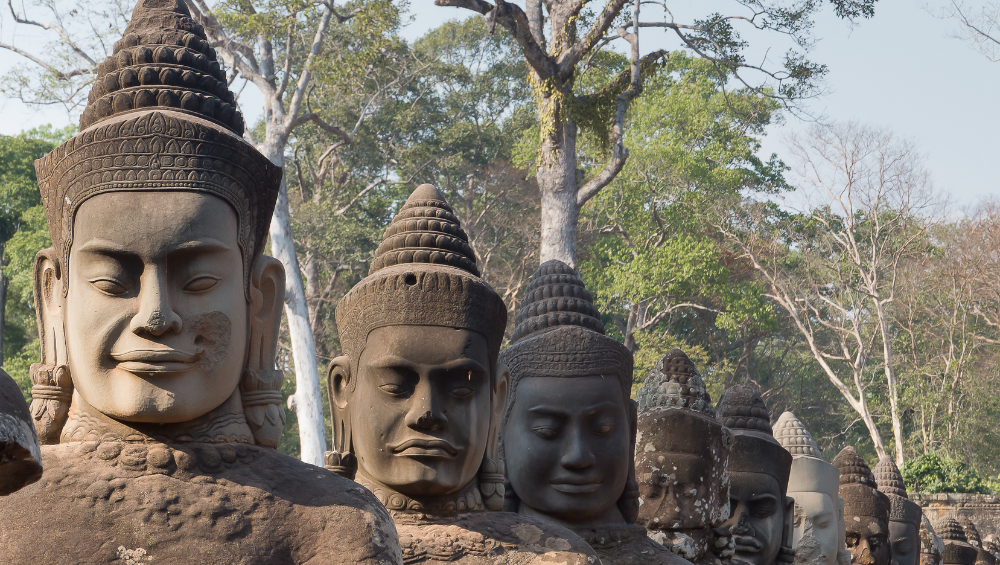
Cultural and Historical Landmarks
The rich heritage of the region is carved into the very stones that make up its temple complexes and historical sites. Here are some must-visit cultural and historical landmarks in Southeast Asia.
Angkor Wat, Cambodia
Angkor Wat is a symbol of Khmer civilization and one of the most prominent religious sites in the world. This stunning temple complex is the largest religious monument ever constructed and boasts intricate carvings, breathtaking architecture, and serene surroundings.
Luang Prabang, Laos
The former royal capital of Laos is a UNESCO World Heritage Site, boasting a blend of traditional Lao and European colonial architecture. Visit the Royal Palace Museum, take part in an almsgiving ceremony, or explore the town’s vibrant night market.
Bagan, Myanmar
Bagan is home to thousands of temples and pagodas that date back to the 9th century. Explore this ancient city on foot, by bicycle, or take a hot air balloon ride for a bird’s eye view of the impressive landscape.
Siem Reap, Cambodia
Siem Reap is the gateway to Angkor Wat and also boasts its cultural attractions. Visit the Angkor National Museum, stroll through the quaint streets of Old Market, or take a boat ride on Tonle Sap Lake to witness the floating villages and their unique way of life.
Hue, Vietnam
The ancient imperial city of Hue is a must-visit for history buffs. Explore the Citadel, visit the Thien Mu Pagoda, and take a boat cruise along the Perfume River for picturesque views of temples and palaces. With its rich history and stunning architecture, Hue is a cultural gem of Vietnam.
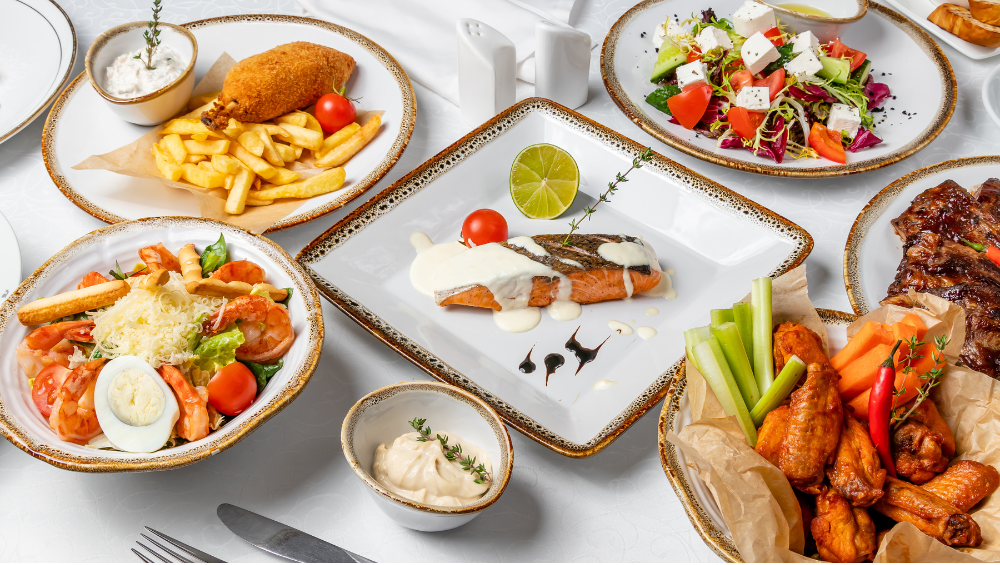
Crafting Your Southeast Asia Itinerary
A well-rounded itinerary is like a well-shaped narrative, full of twists and turns that lead to unforgettable moments. Crafting a Southeast Asia itinerary is part strategy, part serendipity.
Itinerary for Southeast Asia Travel
Designing an itinerary for Southeast Asia requires careful consideration to encompass the region’s spectacular diversity. A 7-day travel plan might include:
- Day 1: Bangkok, Thailand – Start in the bustling capital, exploring historic temples like Wat Pho and the opulent Grand Palace. Experience the vibrant street food scene in the evening.
- Day 2: Siem Reap, Cambodia – Fly to Siem Reap to witness the awe-inspiring Angkor Wat at sunrise, dedicating the day to exploring this vast temple complex.
- Day 3: Hanoi, Vietnam – Discover the rich history of Vietnam’s capital by visiting the Ho Chi Minh Mausoleum, and Old Quarter, and enjoying a traditional water puppet show.
- Day 4: Halong Bay, Vietnam – Take a cruise through the stunning limestone karsts and islets of Halong Bay, including activities like kayaking and cave explorations.
- Day 5: Luang Prabang, Laos – Immerse in the serene atmosphere of Luang Prabang, visiting the Royal Palace Museum and Wat Xiengthong, with a sunset climb up Mount Phousi.
- Day 6: Yangon, Myanmar – Explore the golden Shwedagon Pagoda, walk through the downtown colonial architecture, and experience the local markets.
- Day 7: Singapore – Conclude the trip in the modern city-state, visiting iconic sites like Marina Bay Sands, and Gardens by the Bay, and indulging in a multicultural food scene.
This itinerary aims to highlight the contrast and continuity in Southeast Asia’s cultural and natural landscapes, providing a broad spectrum of experiences.
Tips for Optimizing Your Travel in Southeast Asia
Optimizing your travel experience in Southeast Asia involves strategic planning and cultural consideration. Below are essential tips to enhance your trip, ensuring efficiency, enjoyment, and safety.
- Prioritize Locally-Owned Accommodations: Staying in locally-owned lodgings supports the community and offers a deeper insight into the local way of life. It also often provides a more personalized experience compared to staying at international hotel chains.
- Utilize Regional Budget Airlines: Southeast Asia is served by a network of efficient and affordable regional airlines. These carriers can save travelers time and money, facilitating easier movement between destinations.
- Learn Basic Local Phrases: Communication goes a long way in enhancing travel experiences. Learning basic phrases in the local languages of the countries you visit can aid in navigation, foster respectful interactions, and even help in bargaining.
- Respect Cultural Norms and Etiquette: Southeast Asia is diverse, with varying customs and traditions. Researching and respecting these cultural norms—such as dress codes at religious sites and dining etiquette—can greatly improve your interactions with locals.
- Stay Hydrated and Protect Against the Sun: The tropical climate of Southeast Asia means high temperatures and humidity. Consistent hydration and sun protection are crucial to avoid heat exhaustion and sunburn.
- Keep Cash on Hand: While urban areas often accept credit cards, cash is king in many places, especially in rural areas or at local markets. Always keep some local currency on hand for small purchases.
- Invest in Good Health Insurance: Ensuring you have health insurance that covers you internationally is vital. Access to healthcare varies greatly across the region, and having insurance can mitigate potential costs and complications.
- Be Mindful of Visa Requirements: Each country in Southeast Asia has specific visa requirements for visitors. Checking these in advance and preparing necessary documents can prevent any travel hiccups.
By incorporating these tips into your travel planning and daily itinerary, your Southeast Asia adventure can be more seamless, enriching, and memorable.
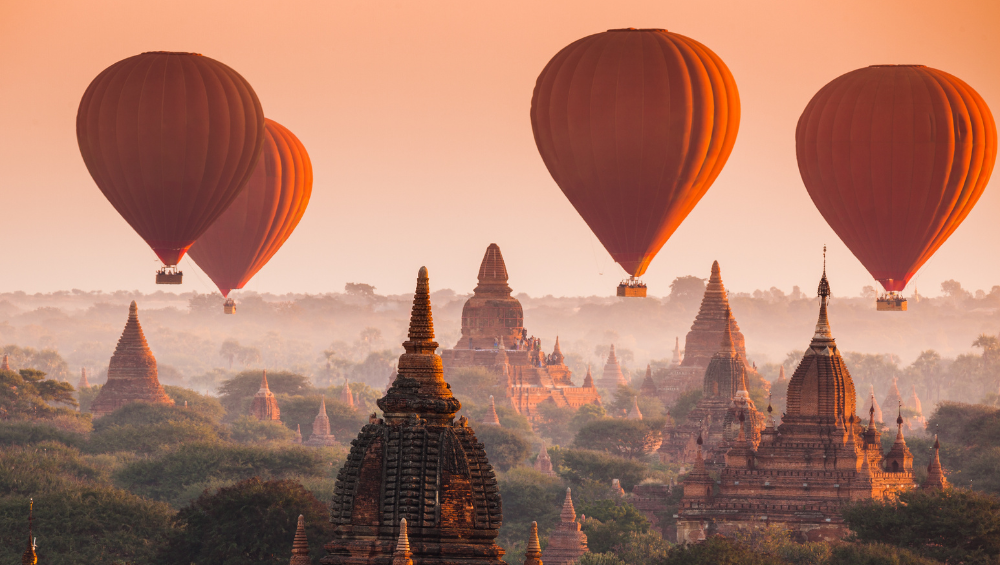
Embracing Southeast Asia Culture
The heart of Southeast Asia beats in its culture and traditions. To truly embrace the region, cultural immersion is key.
Immersive Cultural Experiences
- Traditional Festivals and Celebrations: Dive into cultural experiences at Cambodia’s Water Festival, Myanmar’s Thingyan Water Festival, or Thailand’s Loi Krathong.
- Homestays and Community-Based Tourism: Immerse yourself in local life by staying in the hills of Sapa, living with the Iban tribe in Sarawak’s longhouses, or exploring the daily rhythms of a Thai fishing village.
- Cooking Classes: Enhance your culinary skills and understanding of local ingredients through immersive cooking classes. Learn to make traditional Vietnamese pho or Lao papaya salad.
- Arts and Crafts Workshops: Create handmade souvenirs while learning about traditional crafts like batik painting in Indonesia, pottery making in Myanmar, or lantern making in Vietnam.
Practical Tips for Traveling in Southeast Asia
Traveling in Southeast Asia requires not only an adventurous spirit but also practical preparedness. This section offers essential advice to ensure a smooth and enjoyable journey across this vibrant and diverse region.
From navigating local transportation to maintaining personal safety and staying connected, these tips are designed to enhance your travel experience, making it as enriching and hassle-free as possible.
- Pack Smart: Traveling in Southeast Asia requires more than just a packed bag. Ensure you have essentials like sunscreen, insect repellent, and comfortable clothing for the tropical climate.
- Stay Safe and Healthy: To truly maximize your experience, prioritize your safety and well-being. Carry necessary medications, stay hydrated, and be cautious with street food to avoid getting sick.
- Manage Finances Wisely: Keep track of your expenses and exchange currency at reputable places to avoid scams. Consider using a mix of cash and cards for convenience.
- Efficient Transportation: Navigating transportation can be challenging. Research local modes of transport, use reputable services and plan your routes ahead of time for smoother travel.
- Stay Connected: Ensure you have access to communication tools like local SIM cards or portable Wi-Fi devices to stay connected with loved ones and navigate effectively.
- Enhance Your Experience: By following these tips, you’ll be equipped to handle common challenges and make the most of your Southeast Asian adventure.
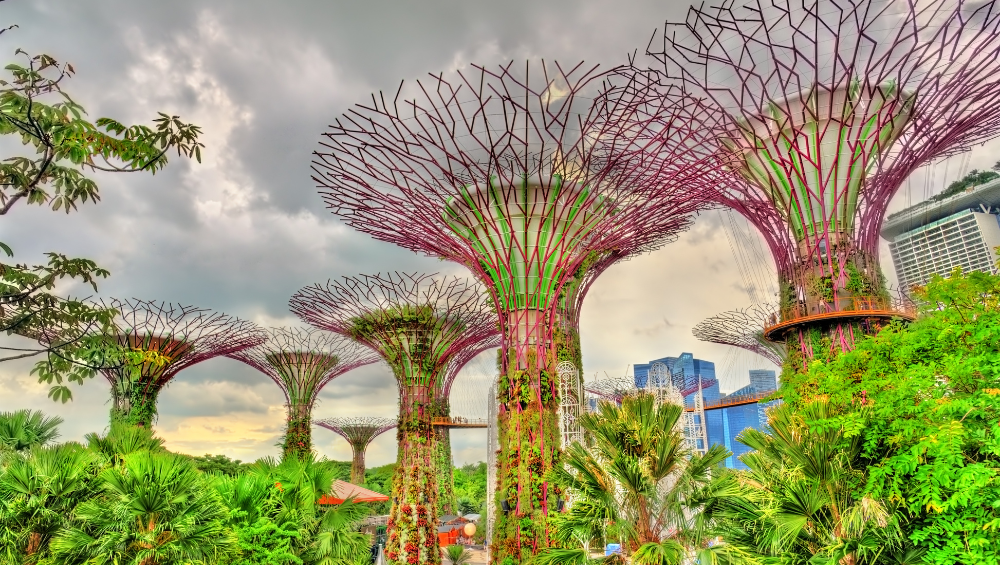
Planning Your Southeast Asia Travel
Planning your adventure to Southeast Asia involves thoughtful preparation to ensure an enriching and hassle-free experience. It requires considering several key aspects:
- Research and Itinerary Planning: Start with a comprehensive research phase to decide on destinations, understand cultural norms, and highlight must-see sights. An organized itinerary can help maximize your time and experiences.
- Budgeting and Finance Management: Determine a budget that includes all travel expenses from flights and accommodations to daily spending. Utilizing budgeting apps and tools can aid in managing finances effectively throughout the trip.
- Packing and Gear Selection: Packing efficiently is vital. Include versatile clothing, travel adapters, and essential gear suited to the climate and activities planned. Prioritize items that are lightweight and multipurpose.
- Health Precautions and Insurance: Obtain necessary vaccinations and secure a comprehensive health insurance policy that covers medical emergencies abroad to mitigate unforeseen health issues.
- Language and Communication: While English is widely spoken, learning basic phrases in the local languages can enhance interactions and show respect for cultural practices.
These preparatory steps are indispensable for adventurers seeking to immerse themselves in the wonders of Southeast Asia, offering a blend of safety, respect, and readiness for whatever the journey entails.
Your Journey Begins in Southeast Asia
The allure of Southeast Asia stems from its contradictions—ancient temples rub shoulders with towering megacities, and tranquil beaches are within reach of teeming markets. Yet, the authenticity and warmth that permeate every experience unify it in a singular invitation to adventure.
The region guarantees a journey as limitless as the horizon. Your odyssey starts here, where time halts to perfect infinity and memories are spun long and elaborate like the weavings of its traditional textiles. Go now, for your heart already knows—it is time.
Begin by charting out your dreams across this travel utopia. And as your footprints mingle with Southeast Asia’s rich soil, may they mark the commencement of a life enriched by the wisdom, magnificence, and boundless magic this corner of the Earth possesses.
Pack your curiosity, leave room for the unexpected, and treat each day as a page of a novel waiting to unfold. The call to adventure has been sung—Southeast Asia awaits your arrival.
FAQs about Southeast Asia Travel
What is the best time to visit Southeast Asia?
The optimal period for visiting Southeast Asia largely depends on the region. However, the dry season, which typically runs from November to April, is considered to be the most favorable time to explore, as it offers pleasant weather conditions suitable for a variety of outdoor activities and sightseeing.
Do I need vaccinations to travel to Southeast Asia?
Yes, travelers are advised to be up-to-date with routine vaccinations and may also require additional vaccinations such as Hepatitis A, Typhoid, and Japanese Encephalitis, depending on their destination within Southeast Asia. Consultation with a healthcare provider at least six weeks before departure is recommended.
Can I use credit cards in Southeast Asia?
The acceptance of credit cards can vary greatly across Southeast Asia. Major cities and tourist areas usually accept credit cards without issue. However, it’s advisable to carry cash when traveling to rural areas or less developed regions, as cash remains the dominant mode of payment there.
Is English spoken in Southeast Asia?
English proficiency levels vary across Southeast Asia. In major cities and tourist destinations, English is commonly spoken and understood by those in the hospitality industry. However, in rural areas and among older populations, proficiency tends to be lower, making it beneficial to learn some basic phrases in the local language.
What are essential items to pack for Southeast Asia?
Given the region’s tropical climate, lightweight and moisture-wicking clothing is vital. Additionally, sun protection, insect repellent, a durable pair of walking shoes, a universal power adapter, and a basic first-aid kit are essential items for a comfortable and safe trip.

